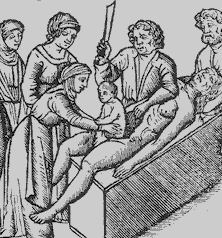 |
Veterinary Anesthesia & Analgesia Support Group |
| Practical Information for the Compassionate Veterinary Practitioner |
|
| HOME |
 |
||
| OPTIMAL CHRONIC PAIN MANAGEMENT | ||
| Multidisciplinary - Interdisciplinary - Transdisciplinary | ||
Dr. Bob Stein 11-2011 Too often, chronic pain management is approached in a unilateral fashion. The patient may be blessed by superb diagnostics, superbly crafted multimodal medication strategies, superbly performed surgical procedures, superb physical rehabilitation therapy, or well balanced TCVM patient care but rarely does the patient have the benefit of a well coordinated combination of "all of the above". Veterinarians and clients alike wish for a quick fix. We all would like patient management to be straight forward; simple, inexpensive diagnostics; simple, inexpensive, adverse effect free, great tasting once daily medications to resolve. But we all know that this isn't going to happen any time soon. To be clear, we are talking about substantial chronic pain here; persistant pain that interfers with the patient's quality of life and threatens their longevity. This pain triggers functional and structural changes within the pain pathways; alterations in system sensitivity as well as a rewiring of the nerve fibers themselves. However, the most critical message that this author can convey is this: Pain Does not simply influence the pain pathways; it is not simply a nerve related phenomina; it is a complex process that effects form and function; it cannot possibly be managed by medications alone. Unfortunately, our profession collectively clings to the pervasive, myopic view that we our patients are well served by a piecemeal approach to chronic pain management. If our goal is optimal patient outcome, if our goal is optimal quality of life and longevity, then we need to face the truth; chronic pain cannot be optimally managed in a disciplinary vacuum; even when the individual discipline is performed at a very high level. Pain medicine, surgery, physical rehabilitation, and patient needle based therapies weave the foundational fabric from which optimal chronic pain management must be crafted. Significant pain affects patient function leading to a reduction in muscle strength and flexibility, a loss in joint mobility, and a loss of patient conditioning (aerobic fitness). Pain medications alone fail to address this altered function. Even in a fictitious world where pain medications performed perfectly and without adverse effect, a chronic pain patient would still need to have their functional recovery scripted by a trained professional. Even in the human healthcare arena where so many of their patients are intelligent and verbal, functional recoveries require a trained guiding hand; this is even more true in the small animal healthcare arena where our patients are all nonverbal. Multimodal pain medicine therapy is capable of producing a relatively quick reduction in patient discomfort as well as being instrumental in the effort to reset the pain pathways to a more normal functional state. A significant reduction in patient pain fascilitates the development of the second step in the patient's recovery program: a physical rehabilitation therapy (PRT). Unfortunately, it is not uncommon for professionals providing PRT to opperate independent of sophisticated pain medicine support; they take what the referring veterinarian provides and they leave the pain medicine discussion at that. Often, this appears to be motivated by the unspoken dirty little professional secret that is too often the veterinary reality; that many veterinarians fail to refer at all due to the fear of lost revenues; that referral practices must not step on the referring veterinarian's toes or they will no longer receive referrals from those veterinarians; that the patient's best interests are not the primary overriding determinent in the patient quality of care. The PRT practice often forges ahead with patient care despite the fact that they have been provided with poor quality diagnostics and inadequate patient pain medication therapy (not to mention the possibility that they were presented with a patient who's surgery was performed at an inferior level). Many high level PRT practices operate in their own vacuum; at facilities consciously devoid of diagnostic equipment and pain management drugs. But what happens when multimodal pain medications and quality PRT fails to achieve optimal patient results? This certainly happens in the human healthcare arena with unfortunate frequency. The cause of persistent pain and dysfunction may well be Myofascial Disease. The solution is often needle based therapeutics. Needle based therapies can be the critical key that unlocks the door to optimal pain relief and optimal patient function. Acupuncture and myofascial trigger point deep dry needling can both provide relief for those suffering from chronic myofascial disease. MTrP-DDN gives TCVM practitioners some freedom to address those patients who's nature (too aggressive or too stressed) makes it impossible to follow conventional TCVM acupuncture principles.
|
||
| Questions or problems regarding this web site should be directed to DRSTEIN@VASG.ORG . Copyright © 2003 ASAH. All rights reserved. Last modified: November 13, 2011 . |
||